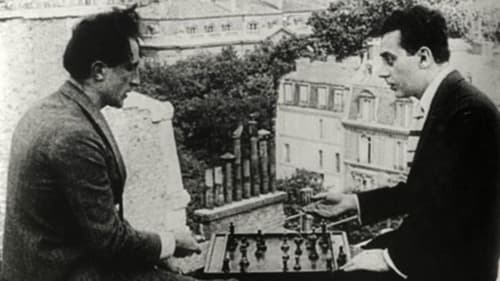
Stop-motion photography blends with extreme slow-motion in Clair's first and most 'dada' film, composed of a series of zany, interconnected scenes. We witness a rooftop chess match between Marcel Duchamp and Man Ray, a hearse pulled by a camel (and chased by its pallbearers) and a dizzying roller coaster finale. A film of contradictions and agreements.

Hans Richter, noted for his abstract shorts, has everyday objects rebelling against their daily routine.

Two Penny Magic (Zweigroschenzauber) starting off with a little magic trick. It then presents an array of images from swimmers, bicyclers, murderers, airplanes in flight, boxers, lovers, runners, becoming in the end a collection of images in a magazine.

Dziga Vertov-directed Soviet newsreel covering: Connecting city and country, south and north, summer and winter, peasant women and worker women / Emancipation of women in the USSR

Man Ray, the master of experimental and fashion photography was also a painter, a filmmaker, a poet, an essayist, a philosopher, and a leader of American modernism. Known for documenting the cultural elite living in France, Man Ray spent much of his time fighting the formal constraints of the visual arts. Ray’s life and art were always provocative, engaging, and challenging.

To celebrate the 100th anniversary of the birth of the surreal art movement, comedian Jim Moir (a.k.a. Vic Reeves) presents this documentary exploring the history of Dadism and the lasting influence it has had on himself and others.

Story about a group of eccentric Dadaist artists in a small Serbian town in the 1920s.

The Dadaist, an eccentric creature who embodies the concept of the 20th century European avant-garde art movement Dadaism, destroys and mocks art pieces such as Leonardo Da Vinci’s Mona Lisa, whilst expressing his impulsive fury at logic and reason.

With input from actor and writer Jan Hlobil, director and cinematographer Rene Smaal presents a film in the true surrealist tradition, in the sense that only 'found' elements were used, and that it defies interpretation based on ordinary cause-and-effect time sequence.

Jim Dine at work and at home. Includes footage of Dine discussing his life, his artistic development, and what is called "ugly" in his work. Examines a number of Dine's works from different periods, including his tie paintings, tool paintings, palettes, collages, and "happenings," and considers Dine's concern with objects in his work.

In the 1920s, Man Ray directed four films which, although largely unknown by the general public, made him into a major figure in avant-garde cinema. His films were to be as radical as his images or objects. Included: Le Retour à la Raison, Les Mystères du Château du Dé, Emak-Bakia, L'étoile de Mer and collected shorts.

Contemplate the "anti-art" spirit of Dadaism, its nihilistic yet humorous indictment of civilization and bizarre use of unconventional media. In the sensibility of Surrealism, observe its compelling focus on the subconscious and two substyles - dream imagery, with its juxtaposition of objects and settings, and "automatic drawing," eliciting unplanned images from the unconscious.

Kubus Home Video presents a Kimberly Kubus film; the brand new in garbage cinema. The Pink Umbrella Man has a cabin possessed when Bob Booze and his friends are driving up. Meanwhile detectives mr. Dick and mr. Head put themselves on the task of solving the mystery. 31 minutes of bugs, guts, breeze, pizza, subways, hats and other stuff. Written & Directed by Kimberly, this movie even has its own theme song. A movie done in total Kubus style from top til bottom, it is rollercoaster cinema in stone delight.

Indifferent landscapes, refracting light, some lonely bird and the window to the sebum-laden living room made of patterned wallpaper and trivialities. Cut. Tenacious sequences inflate moments to cliff-hangers and shatter their tremulous spectatorship. Thundering leitmotifs – in constant intoxication by German disinterest – with no backrest or lederhosen. Black-red-gold at full mast, the cinema is dead.












